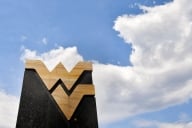You have /5 articles left.
Sign up for a free account or log in.
There has been a shift over the decades when it comes to liberal arts colleges distancing from the religious entities that established them. Chapels that were once filled by mandatory worship attendance have disappeared and have been repurposed as classrooms and concert venues. Identities in the religious and spiritual life have become more multifaith-oriented, even combining efforts with multicultural offices and the like. So has the secular liberal arts college lost its faith? While Franklin & Marshall College, where I am chaplain, is considered by the United Church of Christ as a "related" college, that relationship is not one that is currently active. In spite of that shift and distance in the connection between denominations and colleges I would say no, F&M has not lost its faith. It just looks different.
Faith is something that is not captured in a box or easily defined by one point of view. The multiplicity of the world and the global stage has changed the landscape of the academe and for the better. You have probably heard the bumper sticker slogan, "As long as there are exams, there will be prayer in school." Perhaps. But I would like to suggest that most students are practicing their piety in deeper, more relevant ways.
While some students identify with religious clubs on our campus, more and more students are looking for something else. They are looking for places where they can sit with a question instead of being force-fed answers. When they ask for an answer they might be inviting conversation instead of a lecture. They are practicing their piety through cooking fair trade lunch, teaching English to refugees, assisting people with tax preparation. Some are even building schools, creating space for human rights activism. Isn’t this practicing faith? I would say yes.
While the "mainline" church is in a season of transition, its young people are finding and embracing new ways of being faithful. It isn’t that they don’t care about faith; it’s just that the way they are inspired and motivated to act is different. We are using a different kind of lexicon that is more inviting for students to shape their religious and spiritual experience. Instead of a hierarchal model we are embracing communal gathering, passion for ideas, opportunities for service and meaningful relationships. The three legs of community, passion and relationships allow for our students of all faith traditions to grow in the fullness of a liberal arts experience where the mind, body and spirit are integrated into a holy and yes worldly season of growth and development.
What is considered faithful and secular are not contradictions to one another in a liberal arts environment. In fact it is lived out more intentionally. It might sound different. It might look different because it is different. But I have experienced its presence and I find myself in awe of the possibilities this generation will bring to life.
One of the programs we ran last year was in collaboration between the Office of the Chaplain and our college’s Phillips Museum of Art. When a new installation came to the museum, we hosted a meditation session. Those who gathered entered a time of guided meditation with the art. While the installations were not specifically "religious," it was interesting to see how the participants uncovered or became aware of how the art spoke to them spiritually.
We would walk around the gallery in silence and then land with one piece. We would sit in this silence for about 15 minutes. Believe me … in this culture where things are fast and the senses are overwhelmed constantly 15 minutes can seem like an hour. When that time was over we would share how the art came alive and how it fed our souls. These were moments when the critical heart and compassionate mind came together to express an awareness that inspired all of us who attended. We then left that space and went into the world better for what was shared.
Now here is the challenge. When I share this kind of story with students they will often say, "I didn’t know that was going on." This kind of reaction isn’t because we don't post it on the walls, create events on social media pages or that it isn’t "out there." Most of the time these opportunities are missed because we don’t stop long enough to let what we see and hear to register. Then they are quick to say, "Let me know next time."
I don’t think faith and the secular do not coexist. They do. We just need to give people permission in our incubators of higher education to stop, reflect, breathe and be aware of the faith moments … the sacred moments in what we call secular space. It's not about converting people to a religious tradition. It's not about inviting people to enter the armies of cultural wars. It is all about nurturing the whole person so that the fullness of the body, mind and spirit can thrive. When we are whole, healthy and thrive the world is a much better place. Solutions are more creative. Learning is deeper. Dreams and visions are more intense and the possibilities are endless.
Our students just returned from Spring Break! Some traveled to other parts of the world to see schools they built, or they went to study in a country where they are "other." Some spent quality time with family and others played with friends. Some remained on campus to study and others to work. All of this is good.
I get calls from people frequently who want to come and do ministry on our campus as if there isn’t any ministry going on. There is this perception that a "secular" liberal arts college is void of the sacred, faithful and holy. This is a huge misperception. Every day I see students who care about the world in which they live. Their concern is not just for themselves. At the end of the day my cell phone stays on in case I get that call from a student who is in distress. More often than not I can go to sleep resting in the assurance of hope and promise because of the amazing young people I have the honor and privilege to hang out with on a daily basis.
While those mandatory weekly chapel services don’t happen on our campus anymore there are many ways worship is happening. If we understand "liturgy" to mean the "work of the people" we are worshipping all the time. There is specific time set aside for those who desire worship. Friday evening Shabbat gatherings, Sunday morning worship in local congregations, Wednesday evening gatherings, observance of daily prayers in the Meditation Room and special services as initiated by students. These are happening across faith traditions and in a variety of ways not longer confined just to the chapel space.
Faith and the secular coexist in a healthy tension everyday on our campus. For that I am grateful. They keep each other honest and they cultivate a community of creativity that is like no other. For me they are really pieces or parts of the whole. What an awesome way to live!








